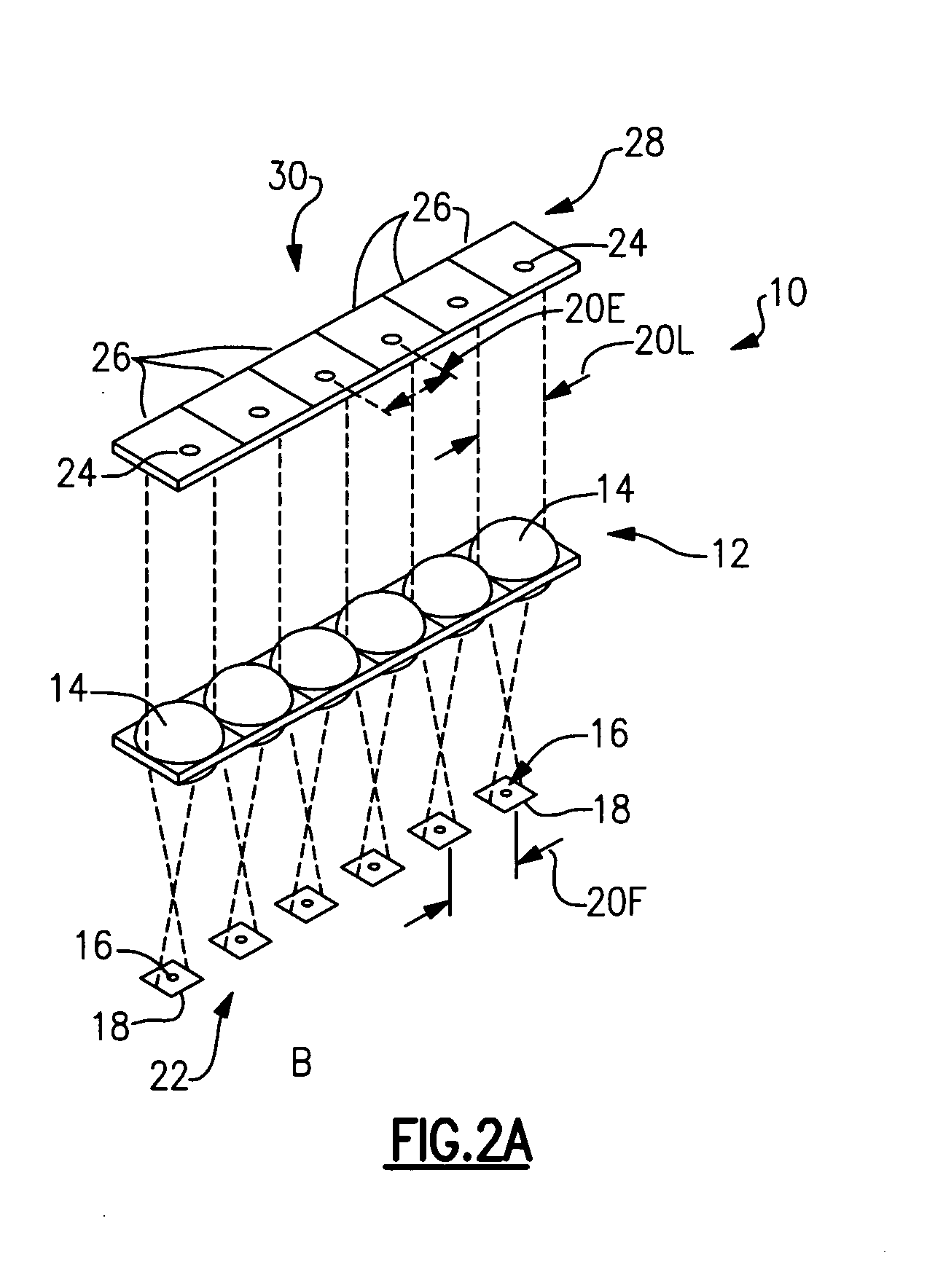Apparatus and methods for the inspection of microvias in printed circuit boards
a printed circuit board and micro-via technology, applied in the field of micro-via inspection apparatus and printed circuit board scanning and imaging, can solve the problems of affecting the image quality of printed circuit boards
- Summary
- Abstract
- Description
- Claims
- Application Information
AI Technical Summary
Benefits of technology
Problems solved by technology
Method used
Image
Examples
Embodiment Construction
[0030]As will be described in the following, the present invention concerns a system and method providing an increased pixel resolution over the diameter of the microvias while, at the same time, increasing the inspection processing throughput. A system of the present is configurable, for example, as either a linear two dimensional (2D) imaging Charge Coupled Device (CCD) camera or as two dimensional (2D) CCD array camera to image microvias or blind hole vias in either a continuous scan process or in a “step and repeat” process. The system and method of the present invention may also be used to image and inspect conductor traces or through hole via interconnects within multi-layer printed circuit board assemblies (PCBs) as are commonly used within the high density printed circuit board industry.
[0031]The following descriptions will focus, however, on the inspection of microvias and the detection of defects, such as partially drilled microvias, as presenting the most difficult inspec...
PUM
 Login to View More
Login to View More Abstract
Description
Claims
Application Information
 Login to View More
Login to View More - R&D
- Intellectual Property
- Life Sciences
- Materials
- Tech Scout
- Unparalleled Data Quality
- Higher Quality Content
- 60% Fewer Hallucinations
Browse by: Latest US Patents, China's latest patents, Technical Efficacy Thesaurus, Application Domain, Technology Topic, Popular Technical Reports.
© 2025 PatSnap. All rights reserved.Legal|Privacy policy|Modern Slavery Act Transparency Statement|Sitemap|About US| Contact US: help@patsnap.com



